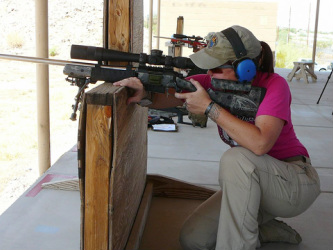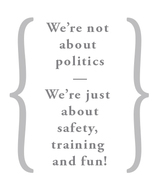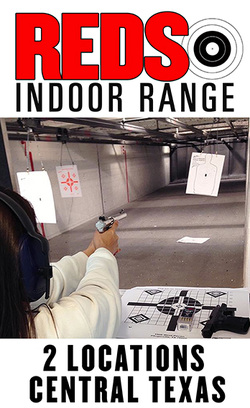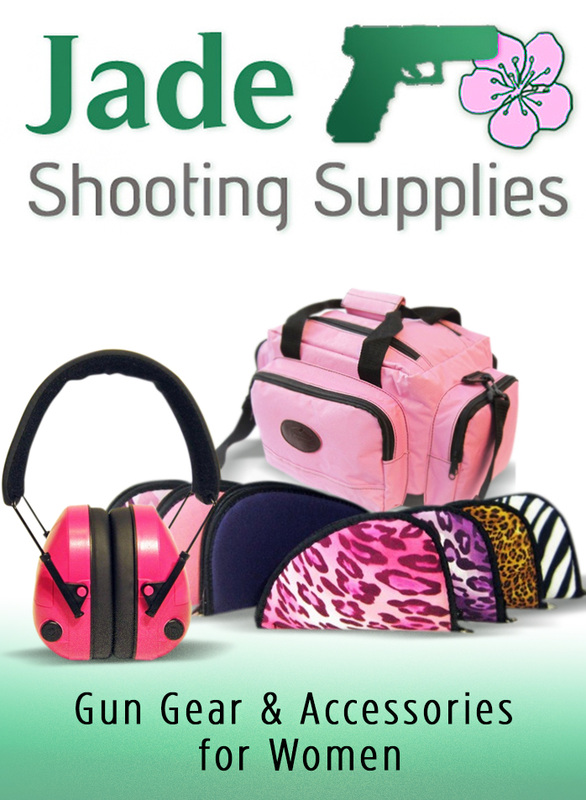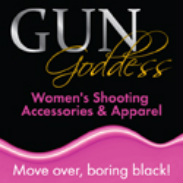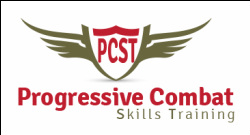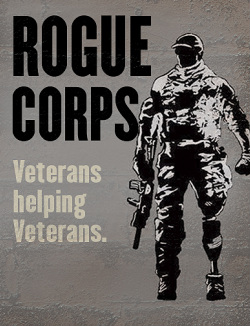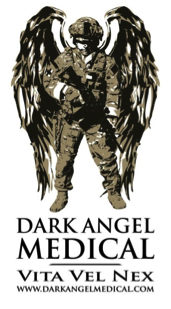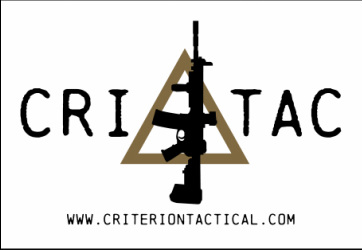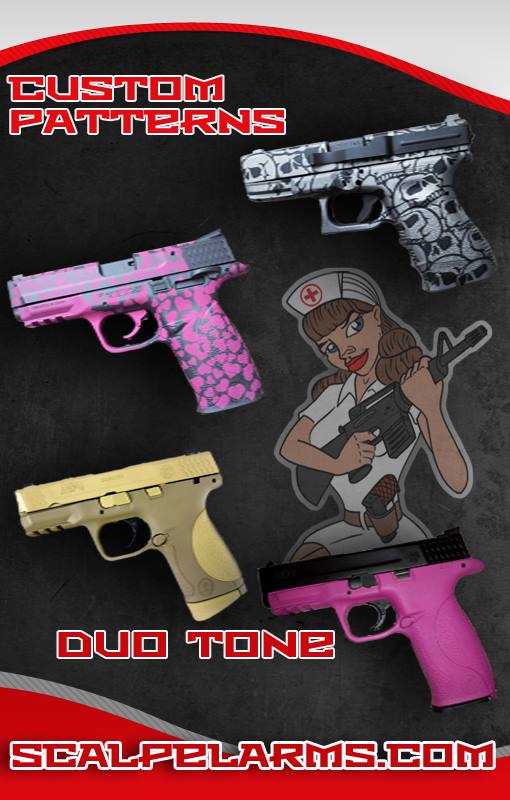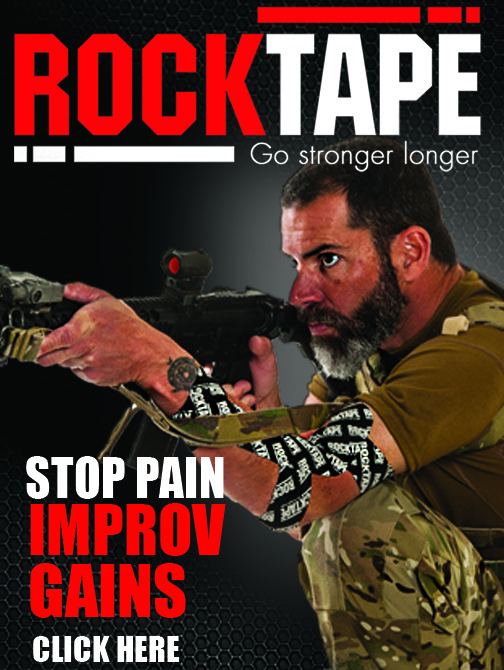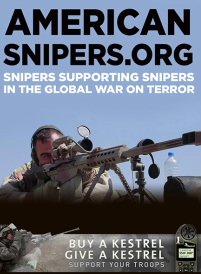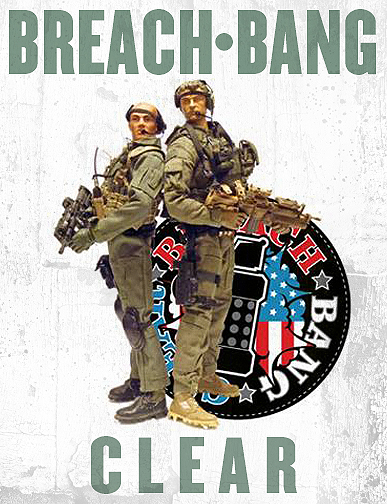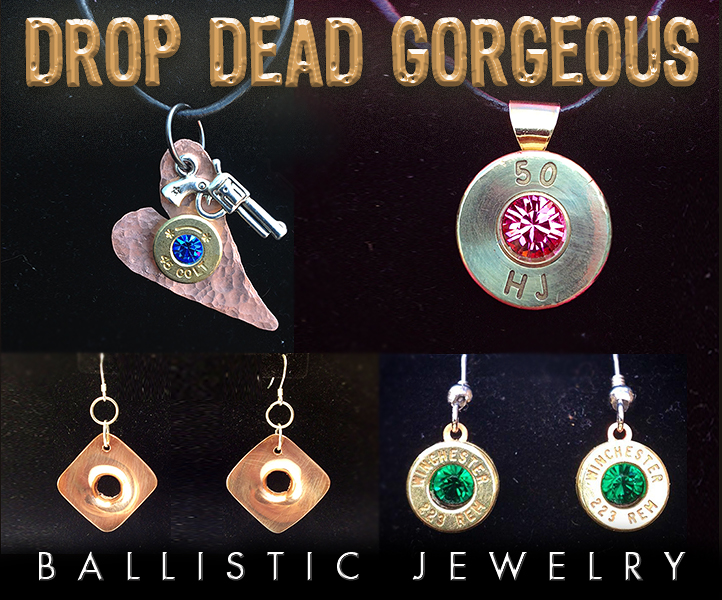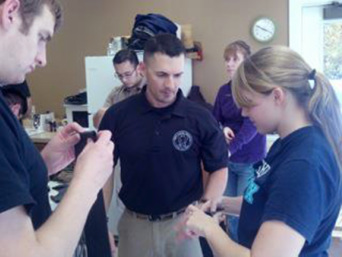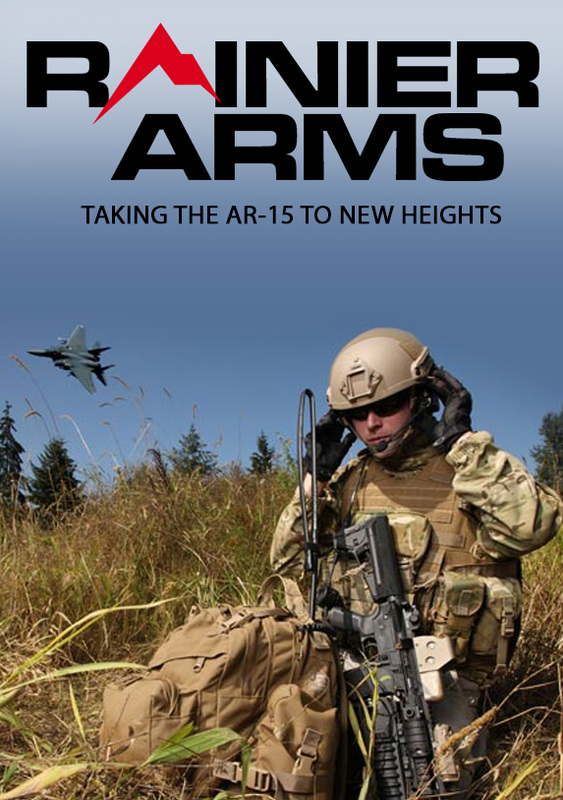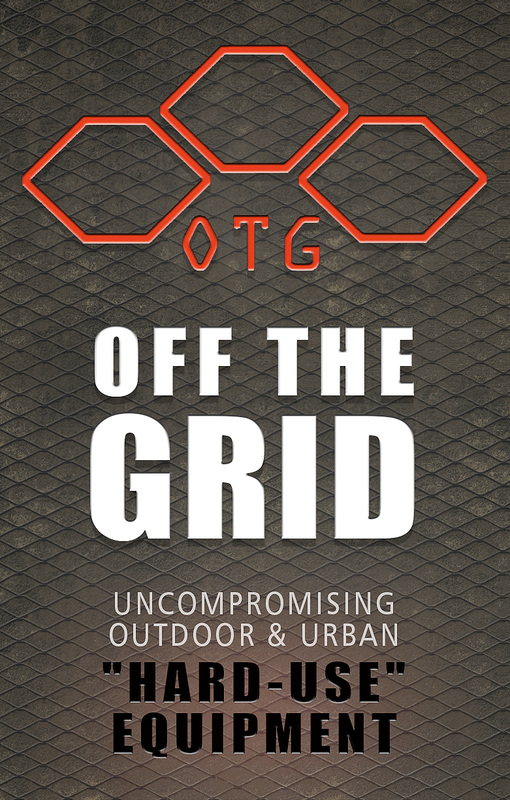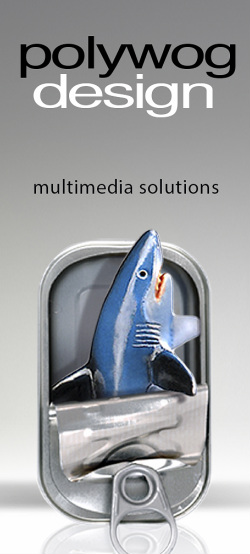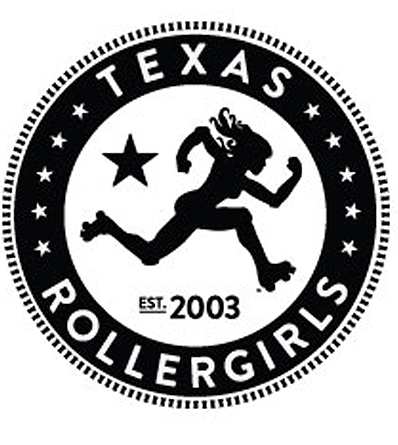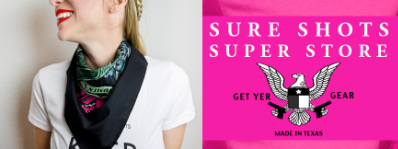ARCHIVE - ISSUE FOUR - OCT 2013 FEATURE PICTORIAL -COVER - LIFESTYLE - REVIEWS ARCHIVE - ISSUE FOUR - OCT 2013
A Match Made in Heaven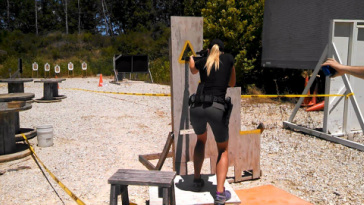
[continued from cover story]
I showed up the morning of the clinic with nothing but a shotgun. Fortunately, everyone was so helpful that they got me set up with the appropriate borrowed gear and I was off and running! Having the pros to instruct and guide me through my first match was invaluable. I did not fall flat on my face and did much better than I expected to - and I was instantly hooked! Since then, I have shot 3 multi-gun matches and am continuing to learn and improve. The most valuable piece of advice I can give someone who has an interest in shooting competitively is to get out there and give it a shot! Put those nerves aside and you'll find a community of extremely friendly and helpful shooters waiting to help you at matches. Everyone was a beginner once and everyone remembers what it was like to be the "new guy/girl". Mistakes will happen but don't be discouraged by them as they are the things from which you can learn the most valuable lessons! It is extremely beneficial to learn from a pro or get some coaching. There are a ton of clinics, camps, and training sessions available including the one like I did with the Noveske Shooting Team, or women-specific ones like the Babes With Bullets camps. It is a real confidence builder to work with someone who shoots the game you want to and who can answer many of your questions. Also, find a local club like I did. It's a great way to meet other competitive shooters and a great place to ask questions! Lots of these clubs will hold practices or practice matches, which are an ideal way to get your feet wet. Don't get too wrapped up in having all of the right gear to start out. Most friendly folks will allow you to borrow some stuff so you can see what you like before you spend too much money. I made the mistake of buying a bunch of gear that looked cool and it ended up not working for me. At the recent Babes With Bullets 3 gun challenge I did, the coaches provided guns, holsters, and shot shell caddies to ladies who needed it. You name it, they had it! Learn from my mistake and test drive some other people's gear before you drop a bunch of money on your own. The first step in starting competition may be the hardest but it's one I really believe you'll be happy you took. You may discover a new passion or uncover a talent you didn't know you had. You'll definitely make friends, build confidence in your shooting abilities, hone your gun handling skills, have a blast, and have a new way to spend all that extra money you always have lying around! Hope to see you out there at a match someday soon. Miss Battle Born works in the firearms industry and is a certified instructor who enjoys helping women discover their shooting talents and shoot better than their husbands. Her online alter ego is MissBattleBorn and you can find her shooting, blowing things up, and sharing her 3 gun adventures on YouTube and Facebook. She also enjoys fitness, collecting stray dogs, and long walks on the beach. [email protected] Facebook.com/MissBattleBorn The Long Ranger
|
by Karen Holmes
I am a relative newbie in the world of guns and self-defense. Sure, my brothers and I spent many a good hour shooting for target practice or hunting when we were younger, but that was just for fun. I never really had any formal training until earlier this year when I found Austin Sure Shots and attended the Defensive Pistol 1 class. There was talk of having a “defensive mindset” and being prepared…being aware and having a plan… being ready for any situation and being conscious of one’s surroundings. It was a bit overwhelming at first and I truthfully found myself thinking I didn’t want to live my life in a paranoid state worried about what is around every corner and behind every door. Furthermore, I didn’t want to have to think that hard, nor did I want the burden of that responsibility. So I dove into training with my gun and learning as much as I could about guns, but the defensive mindset topic was shoved to the back of my mind for the time being. Let’s rewind just a bit. About 20 years worth of rewinding. It was about that time that I began riding horses. Just like my current interest in guns, horses were totally new to me. My mind was a blank slate and I had a lot to learn. One thing I learned early on is that horses can be dangerous and unpredictable and that one must handle them at all times with safety in mind. Over time, the BASICS of horse handling became a habit that I no longer had to think about. They became a way of life for me. At first, I was a passenger on my horse, negotiating with him regarding what I wanted to accomplish. I was at his mercy most of the time. But as time went by, I became an accomplished rider. I could influence my horse. I learned to adjust my riding to his mood and the surroundings. I would ride differently based on the situation. And I became aware enough that I could adjust my riding as quickly as the mood and situation changed. I was no longer riding reactively. I was proactive and riding with SITUATIONAL AWARENESS. Fast-forward to this summer. About six weeks ago, I was on a trail ride with some friends. It was a group that I had never trail ridden with on horses that I did not know in an area that was new to me. I began to notice potential dangers up ahead. I asked about the dog on a driveway about 100 yards away. Was he friendly or would he chase the horses? I wondered if the horse I was riding would become excited when the loose horses in the nearby pasture started running. I found myself adjusting my riding to help prevent problems. I was guiding my horse to the other side of the street away from the dog. I was turning his head away from the running horses and distracting him with my voice. And when he did get a bit excited about the situation, I was ready to stop him. Not only was I aware of the potentially dangerous situations ahead of us, I was using my knowledge to avoid the situations. At the same time I was working towards preventing any escalation of the potentially dangerous situations, I was confident in my ability to react should those situations take a turn for the worst. With years of PRACTICE AND TRAINING under my belt, I can almost instinctually react to just about every dangerous situation one could encounter under saddle. I am confident that I know how to sit a bucking horse, how to prevent rearing or get out of a rear if one happens, how to stop a run-away horse, how to get a horse past something he is scared of and a whole lot of other things that might require me to act without thinking at the spur of the moment. Do I put myself in those situations on purpose just because I know how to handle them? HECK NO! I’m no rodeo rider! But should the need arise, I know what to do and can do it without thinking. It occurred to me on that ride that I DO understand “Defensive Mindset” and I AM capable of situational awareness. I just didn’t realize it. As an equestrian, I was using those skills every day and didn’t even know it. It was at that point that I decided that I am now ready to explore “Defensive Mindset” as it relates to guns and self- defense. As I understand it, “Defensive Mindset” is simply being aware of potential threats and being ready at all times to react. Having a strong awareness of the BASICS is the foundation of a defensive mindset. I’m talking about the five rules of firearms safety. They need to become an ingrained habit. Something we don’t think about but rather just do because it has become a part of us. Over time, once the basics are solidified, PRACTICE AND TRAINING help us become better prepared. By repeating things over and over in a correct and successful fashion, our skills and confidence grow. By challenging ourselves to learn new skills and tactics, we build our skill set. We then perpetuate the practice and training with these new skills until they become as second nature as our basics. Through our practice and training, we will encounter adverse situations and we will learn how to quickly remedy those situations and get back on track. Things like changing out an empty magazine or clearing a jam will become second nature. Even practicing unarmed self-defense tactics with another individual is important. And having these things become second nature may someday mean the difference between life and death in a defensive situation. Perhaps the most important part of “Defensive Mindset” is developing a sense of SITUATIONAL AWARENESS. We need to constantly be aware of the potential dangers around us. Is there a person near by that looks as if they may pose a threat? Is there an area that we are heading into that might be a good place for someone to take advantage of us? Is there a way we can avoid the questionable person or the dangerous area? If we can’t avoid the situation, how can we make it as safe as possible? How can we make ourselves as ready as possible to defend ourselves? So now I find myself at the start of a journey into developing my thoughts and skills. My goal is to develop a strong defensive mindset and skills to go with it. I have hopefully encouraged some of you to take that journey with me. Karen Holmes has been a Sure Shot since January of 2013. She is a physician assistant in orthopedic surgery and rode in competitive equestrian sports for nearly 20 years. She has completed her Concealed Handgun License training along with the Sure Shots Defensive Pistol 1 & 2 courses, Sure Shots Long Range Precision Rifle Clinic, and Sure Shots Defensive Tactics. Train, Train, Train! [continued from cover story]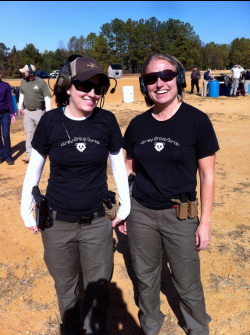
I always believed that since I owned a couple of pistols that I was comfortable with them. The day my husband returned from his first deployment to Afghanistan, I got a phone call from the Sheriff saying my concealed carry permit was in. My husband and I picked it up, and went to the gun store to get me a new pistol to carry. I test fired a couple of options and went with the Sig Sauer P238. The next day, I went to work to show off my new beauty. When my boss asked if he could see it, I gave him the pistol, and told him to be careful because it was loaded. His eyes got big, and with a confused look, he proceeded to unload my pistol. He told me in a later conversation that the convention is to unload the weapon before handing it to someone. He also mentioned that my reaction to his request demonstrated that I wasn’t comfortable with my pistol, and it made him anxious knowing I was carrying anyways. His attitude surprised me as I considered myself a ‘shooter’ for over four years yet he easily sensed I was uncomfortable. How could this be? I blame it on a lack of training.
From this day forward, I made it a point to be as comfortable as I could with my firearm. My boss took the company to the range a couple of times and he helped me on my grip, stance, and trigger squeeze. I am still not perfect by any means, but between training with my boss, friends in the Special Forces community and a short pistol course put on by Larry Vickers, I know some of my strengths, and weaknesses, (and I know I need a lot more training). When I take a shot, I make it count. I take my time, and learn from each shot. If I yank on the trigger, I stop and dry fire at least 5 times. One instructor I worked with, taught me to put a penny on my front sight and pull the trigger; if the penny falls off, I yanked the trigger. This isn’t easy to do by myself, as I have to hold the pistol and put the penny on the sight so if needed, my husband will help. Fast forward to the tragedy in Aurora. I had automatically assumed that since I go to the range and shoot, I would be able to defend myself in any situation. That if someone broke into my house, or started shooting in a crowd, I would be able to protect myself. When the theater shooting happened in Aurora, everyone started talking about what they would do in the situation. Most people said if they were there, they would have shot back. I would like to believe that I too would have shot back, but most likely I would have been too frozen in fear to do anything productive. I believe this because not only have I never been in a high stress situation like this, I don’t have any training or experience in shooting in high stress environments. Many of the trainers I have worked with have said something along the lines of, “If you don’t train, you don’t have the muscle memory to take action in a stressful situation.” I interpreted this to mean that without training, you are no better than another unarmed civilian. As grateful as I am that I have never been in any type of high stress situation, I don’t know what my physiological reaction will be in complete chaos I don’t know if it will be fight or flight. I like to think that with my mindset I will fight, but in all honesty, I don’t know. Here is where training comes to play. Some of us carry pistols and go on with our day telling ourselves that since we have a gun we’re prepared for anything. We have a false sense of security. My firearm resides in my purse, and I have practiced presenting the weapon and firing. But how many times have I switched purses or carried it in a backpack? Do I know how to quickly get to my firearm while zipped up in a pocket, or will I be digging for awhile? What about holsters? I go to the range and use either my Bladetech holster or my Safariland holster, but when I carry, I use my Raven Concealment Holster. Can I draw my weapon efficiently from its holster in a stressful environment? Will I fumble around shaking while my adrenaline rises? How are my magazines changes going to be affected? What about stance? When I go to the range I use the isosceles stance, but if I’m in a fight, will I focus on squaring my body to the target? Will I be able to do any of the fundamentals of shooting if I am attacked while getting into my car in a parking lot? These questions above are just some of items I am working on and need to continue to work on. One area that I am terrified to get into, but at the same time would love is Close Quarters Battle (CQB) training with simunitions. I fear pain, but feeling the realism of using simunitions would better represent the stressful environments of real shooting. I realize training will help set me up for success if or when I have to defend myself. Ramia Whitecotton works part-time as the Training Coordinator at Grey Group Training and although a native Texan, she resides in Lawrence, KS where she works full-time for the University of Kansas. |
